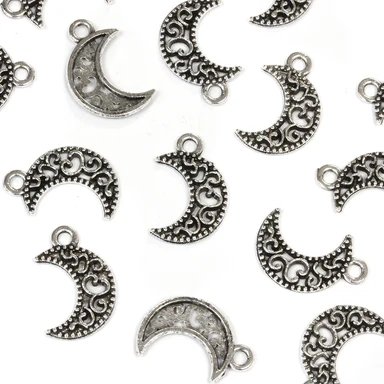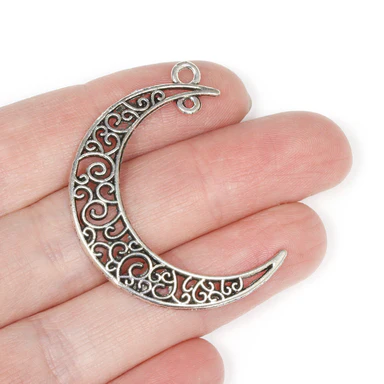
Coloured Elastic Black 1mm - Pack of 10m
Elastic within a cotton cover in a range of bright colours, alongside classic black and white. Perfect for quick and simple bracelets, a favourite ...
View full detailsIf you would like to see the best (and scariest!) fancy dress Halloween outfits around, then look no further....












Feeling inspired to made your own Halloween beaded jewellery? We have had fun creating some free designs to get your started.... just follow our free step by step instructions and see what products we used...
Are your ready to start making your Halloween jewellery project? Then pop along to our Halloween Collection!

Elastic within a cotton cover in a range of bright colours, alongside classic black and white. Perfect for quick and simple bracelets, a favourite ...
View full details
A tiny moon with a pretty filligree design Charms are ideal for making earrings, pendants or adding to charm bracelets. You could also use them fo...
View full details SALE
SALE
Strong, versatile and extremely good value, no wonder this has been a top seller for years! Made of woven cotton which will soften with wear. Use w...
View full details SALE
SALE
Strong, versatile and extremely good value, no wonder this has been a top seller for years! Made of woven cotton which will soften with wear. Use w...
View full details

Perfect for Halloween craft! Pony beads are brightly coloured plastic beads, with a lovely big 4mm hole. They are available in over eighty differen...
View full details

Add a charm to the bottom loop of this statement pendant for a quick jewellery make Charms are ideal for making earrings, pendants or adding to ch...
View full details

Whether you know it as a pentagram pentacle or pentangle you'll be familiar with this symbol so why not add one to your next piece of jewellery? M...
View full details

Did you know there are over 1000 species of bats worldwide making up a quarter of the world’s mammals Our silver species aren’t of the vampire vari...
View full details

Thought to represent a spiritual connection to magic bird skulls have been used in divination for many ages Now you can keep that connection close ...
View full details